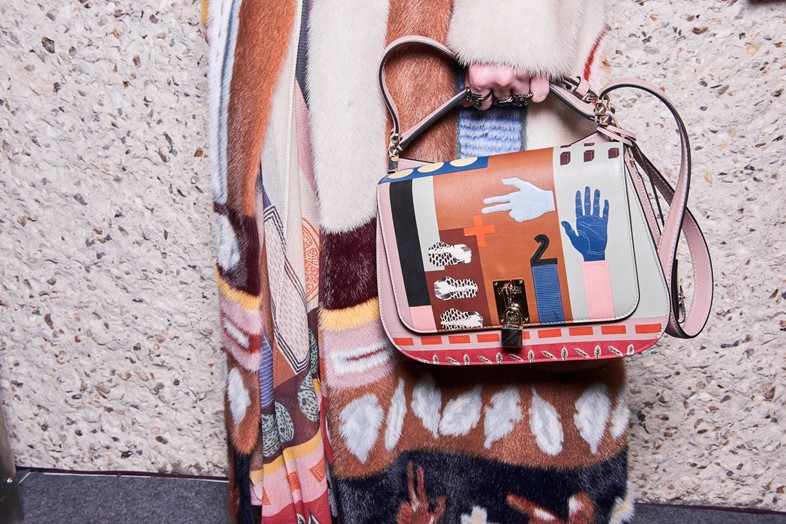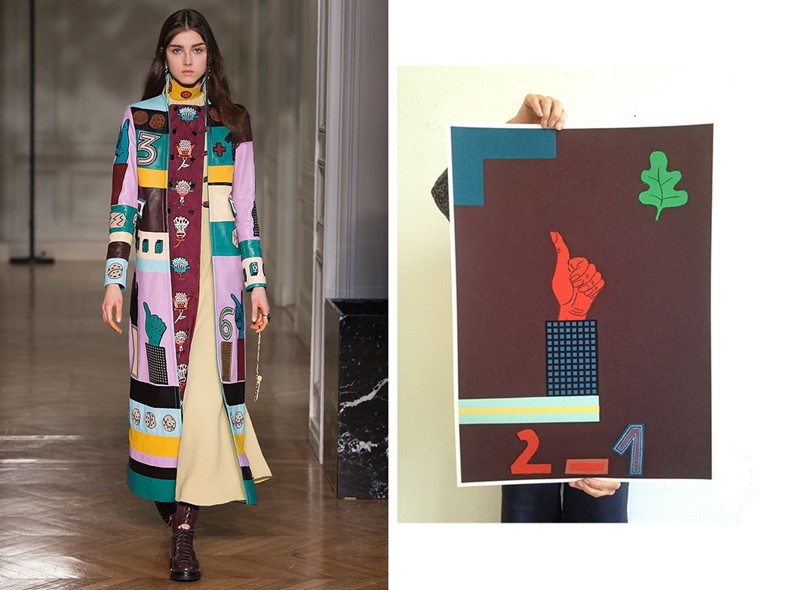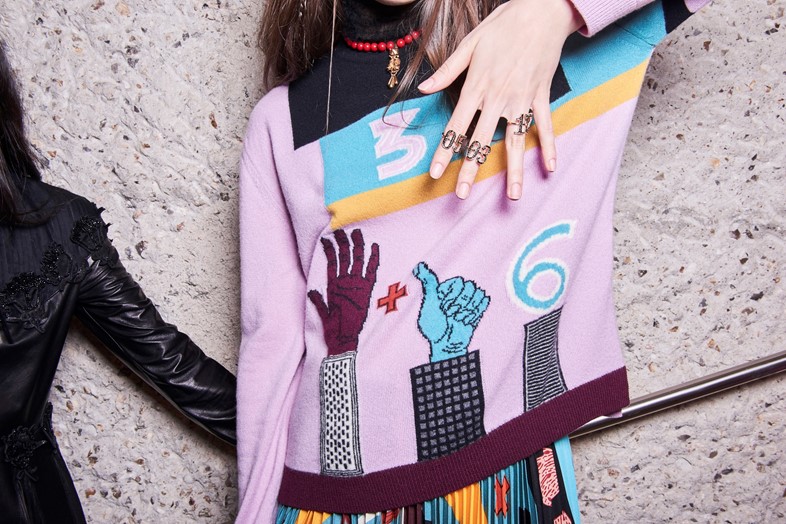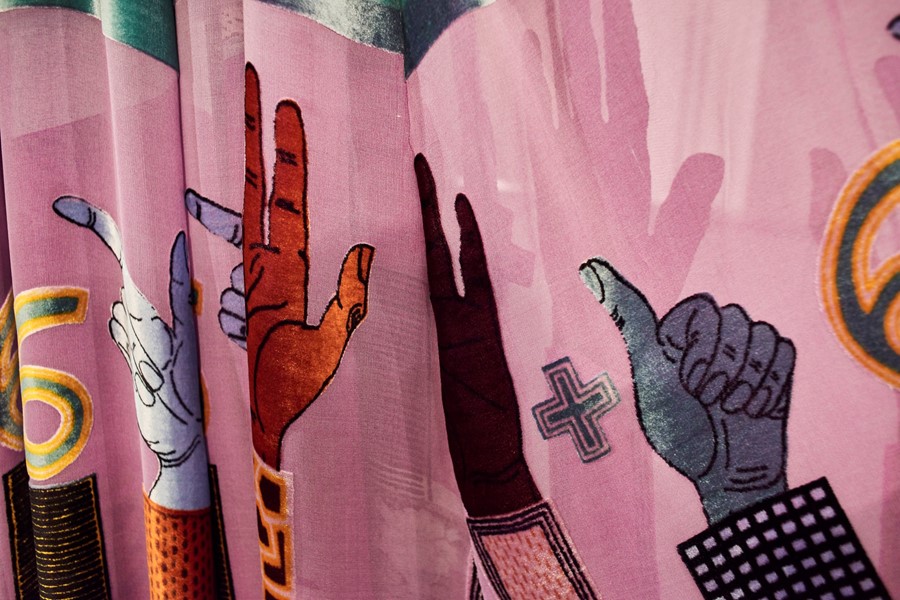Original Memphis artists Nathalie du Pasquier and George Sowden talk us through their trippy textile designs for the house's A/W17 collection
There were two themes central to Pierpaolo Piccioli’s A/W17 Valentino collection show: “Victoriana, and Memphis,” the designer explained backstage. Victoriana strikes a familiar note on the catwalk: high necklines, shrouds of intricate lace, long bustling skirts, military tailcoats and austere lines. Memphis, on the other hand, a Milanese group which ushered in a postmodern art and architectural movement between 1981 and 1987, comes somewhat at odds with this nod to 19th-century England. Once described as a “shotgun wedding between Bauhaus and Fisher-Price,” the movement’s comic book colour palette, jagged prints and chaotic patterns served as a rebellion against the austerity of Modernism and brought a visual riot to the Salone del Mobile furniture fair back in 1981. Tapping into what is seen by many as a current cultural renaissance with the anti-establishment design movement (auction houses note that prices of Memphis Group furniture have surged since 2016), Piccioli enlisted two of Memphis Group’s founding members, Nathalie du Pasquier and George Sowden, to bring a little dissonance to his ultra romantic designs.

“We really liked this idea of the mix,” Du Pasquier tells AnOther of her work on the recent collection. “It is in fact the idea we developed in the 80s; it is part of our Postmodern D.N.A.” Though the Memphis Group disbanded 20 years ago, Sowden and Du Pasquier’s design work still embodies much of the same visual message today, though they’ve each expanded into numerous other mediums. As such, this was no nostalgia trip. Instead it was the artists’ recent bodies of work which informed the prints, allowing Piccioli to form a contemporary discourse with the group. Having scanned their archives, the team at Valentino chose drawings by Sowden’s recent collection, Designing Without a Cause, and from Counting, a poster project of du Pasquier’s from two years ago.

The pair share a studio, but they mostly adhere to their own individual projects. It’s only on occasional textile design projects that they come together, though they certainly do share an aesthetic sensibility. “We usually work on our own projects and then they fit well together, but we do not work on the same piece of paper,” explains Du Pasquier. “We do not ‘mix’ our work,” agrees Sowden. “We both create separately and the individual work is put together at the end of the process – in the case of Valentino, you can see which textile is derived from Nathalie’s work or from mine quite clearly.” After our conversation, Sowden sent me some photographic proof: pictures revealed his own notebooks, the doodled page directly transplanted onto floor length black and white dresses; other photos show Du Pasquier holding her posters, from which an eclectic mish-mash of illustrated hands and numerals are clearly legible on punchy-palette gowns, the famed Memphis colour-ways adding an unexpectedly piquant flavour to Piccioli’s designs.

Having been a practising designer since long before and since the Memphis Group was closed by its founder, Ettore Sottsass, George Sowden is inevitably less inclined to believe that the movement is merely enjoying a fleeting resurgence. “Memphis was a defining moment in late-20th-century design – it became a movement that influenced the aesthetics and identity of global design since our first exhibition in Milano, 1981,” he says. “As such, it will never go away, but will be forever discussed and criticised, added to, copied and constantly reinterpreted by generations to come.” The proof is this delicately proffered Valentino dessert: a modern-day dialogue with the rebellion of the 80s that, as Du Pasquier explains, may be a requirement of the times. “The collection was about that clash between two very different times, but maybe we live in a world where we are confronted by that anyway.”

On seeing their radical impact on the collection, the results were pleasing for the pair. “Not belonging to the fashion world, there is a magic about it that I could not resist,” explains Du Pasquier. “I am a painter and work on my own, so there was a pleasure in seeing such a good team at work, people enjoying what they were doing and doing it so well.” “We were very happy to see the finished results,” Sowden agrees. I ask Sowden if they felt pleased to bring a dash of chaos to Piccioli’s trademark prettiness. “Chaos is maybe not the right word, I would say excitement,” he replies.
